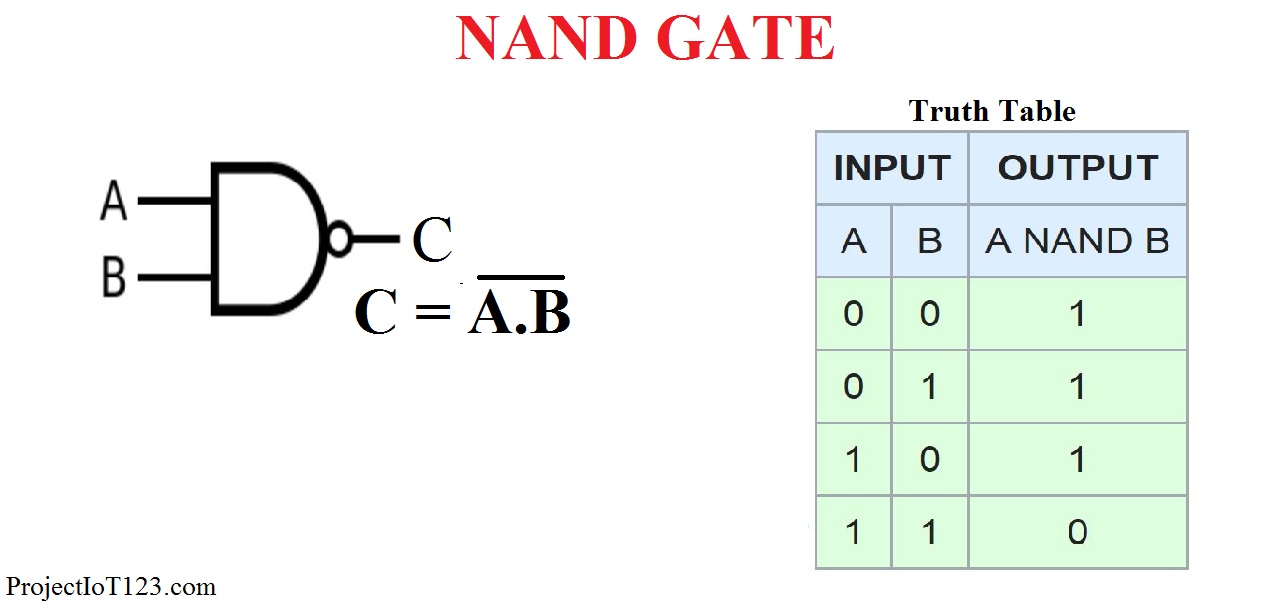

This makes the transistors T A and T B or either of the transistor to be in an ON state. When both the input pins X and Y or either of the inputs is applied with high logic (+5V) which means the base terminals of both the transistors have +5V voltage. Ideally, the transistor T C has some voltage drop (0.6V – 0.7V) across it and this voltage appears at the output which is considered as 0. As the third transistor T C is in ON condition, it performs as short-circuited device and the entire +5V gets dropped down to the ground and output appears to be logic LOW (0V). Here, +5V voltage moves to the ground through R1 and transistor T C. This makes the transistor T C get the required amount of potential and it will be in an ON state. At this condition, the supply voltage of +5V will not have a path to pass to the ground via any one of the transistors T A and T B. When the input pins X and Y are provided with ‘0’ Volts or when both the pins are grounded, then the transistors T A and T B move into OFF condition correspondingly. Below is the circuit diagram of a two-input OR logic gate using a transistor. The operation and construction of an OR logic gate can also be derived using a transistor. When both the inputs are grounded or provided with 0V, then there will be no voltage at the output and considered as logic LOW. Then the 4.4V voltage appears at the output. When both the inputs are provided with a supply voltage of +5V, both the diodes will move into forward-biased state. This 4.4V or 4.3V is ideally taken into consideration as logic HIGH. In practical scenarios, the entire supply voltage +5V will not be present at the output, some level of voltage drop (0.6V – 0.7V) happens at the diode and the rest of the voltage level (4.3V or 4.4V) passes to an output pin. So, the +5V voltage appears at output Z which means the output is logic HIGH. Whereas when either of the inputs is provided with a supply voltage of +5V, then the corresponding diode moves into forward biased condition and operates as a short, circuited device. This article contains some of this including lab projects to build gates with transistors.As per the above circuit diagram, when the inputs X and Y are provided with 0V, then the output X shows no voltage. If you are a student, then a good lesson plan is to become familiarised with the logic symbols, truth tables, and their equivalent circuits using transistors. A GCSE Computing student might for example use the 74LSXX range of chips to implement the circuit. The most commonly used chips are TTL ( Transistor-Transistor Logic) chips, which operate at the 5 V logic level. Once the expression is derived, they implement it using digital logic chips. A combination of gates connected together can perform a more complex logic function, and with the aid of Boolean algebra, the engineer may be able to simplify and optimise the circuit so that it uses the least number of gates. An engineer uses logic symbols to focus on the logic expression, instead of the electronic circuits behind them.

Each gate performs a specific logic function behind which there is an equivalent transistor based electronic circuit. Logic gates are the basic building blocks used typically in the field of Digital Electronics.


 0 kommentar(er)
0 kommentar(er)
